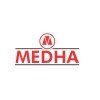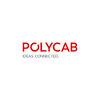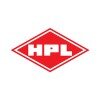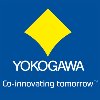
i
Kirloskar Electric
Company
Filter interviews by
Kirloskar Electric Company Design Engineer Interview Questions and Answers
Kirloskar Electric Company Design Engineer Interview Experiences
4 interviews found
I applied via Walk-in and was interviewed in May 2024. There were 3 interview rounds.
(2 Questions)
- Q1. Introducing yourself
- Q2. Why you need this job
- Ans.
I am passionate about innovative design and eager to contribute my skills to impactful engineering projects.
I have a strong background in CAD software, which I used to design a prototype for a sustainable energy solution in my last project.
I am excited about the opportunity to work on cutting-edge technologies, such as renewable energy systems, which align with my values.
Collaboration is key in engineering, and I thriv...
Basic Mechanical Engineering
(2 Questions)
- Q1. CAD Knowledge basic
- Q2. Basic Measurement’s
(2 Questions)
- Q1. Introduction about your self
- Q2. Why you choose this job
Basic Engineering of Mechanical
(2 Questions)
- Q1. Knowledge about CAD
- Q2. Measurements usage
- Ans.
Measurements are crucial in design engineering for ensuring accuracy and precision in the development process.
Measurements are used to determine dimensions, tolerances, and material properties of components.
They help in ensuring that the final product meets the required specifications and standards.
Various tools such as calipers, micrometers, and gauges are used for taking measurements.
Measurements also play a key role...
I applied via Walk-in and was interviewed in Sep 2023. There were 3 interview rounds.

Paper test given to candidates
(5 Questions)
- Q1. What is your name
- Q2. Angke of projection explain
- Q3. Stress strain defination and curve
- Q4. Modes of heat transfer
- Ans.
Heat transfer occurs through conduction, convection, and radiation.
Conduction: Heat transfer through direct contact between materials (e.g. touching a hot pan)
Convection: Heat transfer through the movement of fluids or gases (e.g. boiling water)
Radiation: Heat transfer through electromagnetic waves (e.g. feeling the warmth of the sun)
- Q5. Angle of projection
- Ans.
Angle of projection refers to the angle at which an object is launched into the air.
Angle of projection affects the range and height of the projectile.
The optimal angle of projection for maximum range is 45 degrees.
Different angles of projection result in different trajectories of the projectile.
The angle of projection is measured from the horizontal axis.
Interview Preparation Tips
I applied via Referral and was interviewed before May 2022. There were 2 interview rounds.

(3 Questions)
- Q1. Basic technical questions from mechanical
- Q2. Basics of mechanical engineering
- Q3. Mechanical engineering basic questions
Interview Preparation Tips
Top trending discussions






Interview questions from similar companies

I applied via Campus Placement and was interviewed before Apr 2019. There was 1 interview round.
Interview Questionnaire
4 Questions
- Q1. What is your key achievement ? Either your study or professional
- Ans.
Successfully led a cross-functional team to develop a scalable software solution, improving efficiency by 30%.
Led a team of 10 engineers in developing a cloud-based application that streamlined project management.
Implemented Agile methodologies, resulting in a 25% reduction in project delivery time.
Designed and executed a performance optimization strategy that improved application speed by 40%.
Mentored junior engineers...
- Q2. What you think about company ?
- Ans.
The company is innovative, values collaboration, and is committed to making a positive impact in its industry.
Strong focus on research and development, exemplified by recent product launches that have set industry standards.
A collaborative work culture that encourages team brainstorming sessions, leading to creative solutions.
Commitment to sustainability, as seen in initiatives to reduce carbon footprint and promote ec...
- Q3. Where you see yourself in company ?
- Ans.
I envision myself as a key contributor, leading innovative projects and mentoring junior engineers to drive the company's success.
I aim to take on leadership roles, guiding teams through complex projects, like developing a new product line.
I want to mentor junior engineers, sharing my knowledge and experience to help them grow, similar to how I was guided early in my career.
I see myself collaborating with cross-functio...
- Q4. Why we select you?
- Ans.
I bring a unique blend of technical expertise, leadership skills, and a proven track record of delivering innovative solutions.
Extensive experience in software development, having led projects that improved system efficiency by 30%.
Strong leadership skills demonstrated by mentoring junior engineers, resulting in a 20% increase in team productivity.
Proven ability to solve complex problems, such as optimizing a legacy sy...
Interview Preparation Tips
Opportunities never ends

Design Engineer Interview Questions & Answers
CG Power and Industrial Solutionsposted on 19 Mar 2015
Interview Questionnaire
2 Questions
- Q1. Why should we select u.... How r u better than others.
- Ans.
I have the necessary skills, experience, and passion to excel in this role.
I have a strong background in design engineering with a proven track record of success.
I am highly skilled in using various design software and tools.
I am a quick learner and can adapt to new technologies and processes easily.
I am a team player and can work collaboratively with others to achieve common goals.
I am passionate about design engineer...
- Q2. Simple basic technical questions...
Interview Preparation Tips
Tips: Be confident... Never lie @ personal interview.
Round: Technical Interview
Tips: Study atleast 2 subjects thoroughly....
Skill Tips: Keep smiling...
Keep in mind that u r better than the rest
Skills: Confidence
College Name: NIT BHOPAL

I applied via Company Website and was interviewed in Jul 2021. There were 3 interview rounds.
(1 Question)
- Q1. Tell me about yourself.

Interview Preparation Tips

I applied via Naukri.com and was interviewed before Jun 2020. There was 1 interview round.
Interview Questionnaire
3 Questions
- Q1. Material used in mcb components
- Ans.
MCB components are typically made of materials such as copper, silver, thermoplastics, and ceramics.
Copper is commonly used for conducting electricity in MCBs.
Silver is sometimes used as a contact material for better conductivity.
Thermoplastics like polyamide are used for insulation and housing of MCB components.
Ceramics are used for arc chutes to extinguish the arc when the MCB trips.
Other materials like steel, brass,...
- Q2. How many manpower you are handled
- Ans.
I have managed teams ranging from 5 to 20 engineers, focusing on project delivery and team development.
Led a team of 10 engineers on a software development project, ensuring timely delivery and quality.
Managed cross-functional teams of 15 members, including developers, QA, and designers, to enhance collaboration.
Oversaw a team of 8 engineers in a critical project, implementing Agile methodologies to improve efficiency.
...
- Q3. I replied them 200
Interview Preparation Tips


(1 Question)
- Q1. Past projects experience
- Ans.
Led multiple engineering projects, focusing on innovative solutions and team collaboration to enhance product efficiency and quality.
Managed a cross-functional team to develop a cloud-based application, improving deployment speed by 30%.
Implemented Agile methodologies in a project, resulting in a 25% increase in team productivity.
Designed a scalable microservices architecture for a healthcare platform, enhancing system...
(1 Question)
- Q1. Family background details
Interview Preparation Tips
Be strong in core subjects

(2 Questions)
- Q1. Work experience?
- Q2. Educational and work details details?
(2 Questions)
- Q1. Civil engineering related questions
- Q2. Assignment for costing and Estimation
- Ans.
Costing and estimation assignment for Senior Engineer position
Understand the scope of the project and gather all relevant information
Break down the project into smaller tasks and estimate the time and cost for each task
Consider factors such as materials, labor, equipment, and overhead costs
Use historical data or industry benchmarks to validate your estimates
Provide a detailed cost breakdown and justification for your e...
Computer software skills
Estimation & costing related work
(2 Questions)
- Q1. Documents check
- Q2. Salary discussion
Interview Preparation Tips
Kirloskar Electric Company Interview FAQs
Tell us how to improve this page.
Kirloskar Electric Company Interviews By Designations
- Kirloskar Electric Company Design Engineer Interview Questions
- Kirloskar Electric Company Senior Engineer Interview Questions
- Kirloskar Electric Company Accounts Officer Interview Questions
- Kirloskar Electric Company Senior Engineer Materials Interview Questions
- Kirloskar Electric Company Graduate Engineer Trainee (Get) Interview Questions
- Kirloskar Electric Company Senior Product Engineer Interview Questions
- Kirloskar Electric Company Deputy Manager Design Interview Questions
- Kirloskar Electric Company Techno Commercial Engineer Interview Questions
- Show more
Interview Questions for Popular Designations
Overall Interview Experience Rating
based on 4 interview experiences
Difficulty level
Duration
Design Engineer Interview Questions from Similar Companies
Kirloskar Electric Company Design Engineer Reviews and Ratings
based on 15 reviews
Rating in categories
|
Design Engineer
53
salaries
| ₹2.5 L/yr - ₹4 L/yr |
|
Junior Technical Officer
41
salaries
| ₹2 L/yr - ₹4.2 L/yr |
|
Engineer
34
salaries
| ₹3 L/yr - ₹5 L/yr |
|
Senior Engineer
28
salaries
| ₹3.8 L/yr - ₹7.2 L/yr |
|
Assistant Manager
25
salaries
| ₹5.8 L/yr - ₹12.5 L/yr |

Havells

Polycab Wires

CG Power and Industrial Solutions

C&S Electric
- Home >
- Interviews >
- Kirloskar Electric Company Interview Questions












